
Mapping artisanal mining areas and mineral supply chains in eastern DRC (2019)
April 9, 2019In a new report and webmap, IPIS presents its updated data on armed conflict and armed interference in eastern DRC’s artisanal mining sector. Building on extensive data, gathered over the last ten years, IPIS assesses the impact of responsible sourcing initiatives in DRC, designed to address armed interference in mineral supply chains. The report illustrates that responsible sourcing efforts have
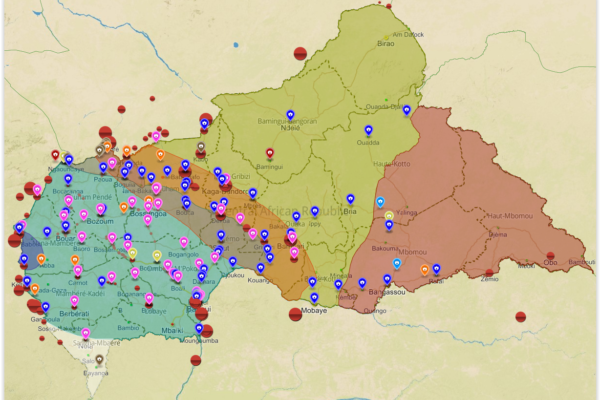
Mapping Conflict Motives: the Central African Republic (2012-2014)
November 21, 2014In this study, IPIS analyses the conflict dynamics in the Central African Republic (CAR) since the outbreak of the latest crisis in September 2012 up to September 2014. The analysis specifically looks into the motivations and interests of the main conflict parties, Seleka and anti-balaka, and the influence and interests of neighbouring countries. The report covers the following key questions. What
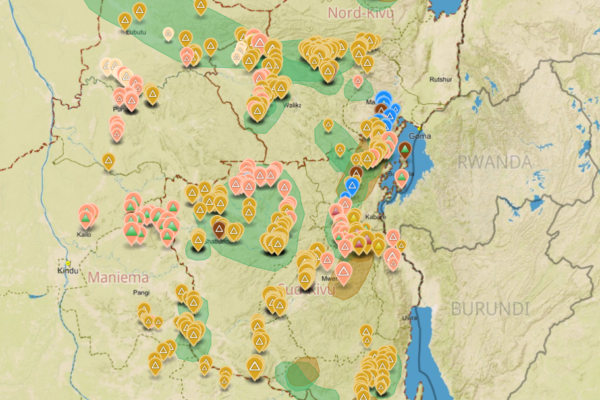
Analysis of the interactive map of artisanal mining areas in Eastern DRC – May 2014 Update
April 30, 2014In collaboration with the Congolese mining cadastre (CAMI), mining service SAESSCAM and representatives from local civil society organisations, IPIS organised a series of field visits to monitor artisanal mining activities and the involvement of armed groups and criminal networks in mineral exploitation and trade. This resulted in the publication of an interactive web map providing information on
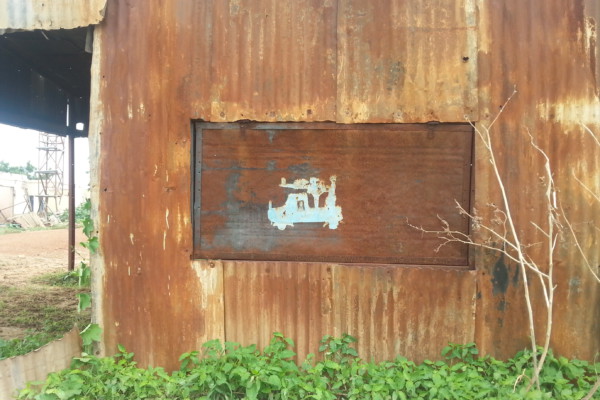
Mapping Conflict Motives: the Sudan – South Sudan border
January 23, 2014In “Mapping Conflict Motives: the Sudan-South Sudan border”, IPIS analyses the conflict dynamics in the wider border area spanning Sudan and South Sudan. The analysis specifically looks into the motivations and interests of the parties involved in the interstate, intrastate and local conflicts in this area. The report covers the following key questions: Where are conflict parties focussing their e
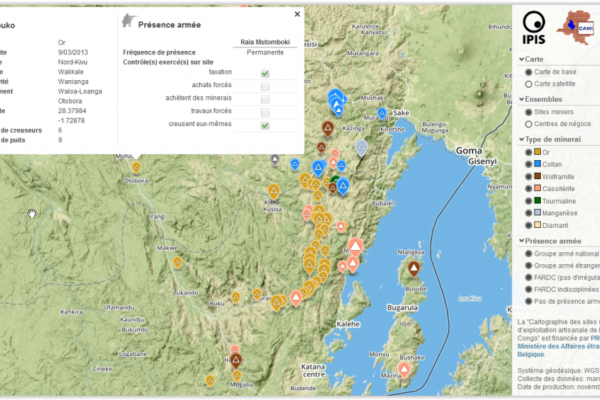
Analysis of the interactive map of artisanal mining areas in Eastern DR Congo (2013)
November 13, 2013In August 2009 the ‘International Peace Information Service’ (IPIS) published a first map of militarised mining areas in Eastern DR Congo. By 2012, the international interest in the issue had grown but the map was out-dated. To find a structural solution, IPIS sat down with the Congolese mining cadastre (CAMI) and agreed to set up a permanent system to monitor artisanal mining activities and the i
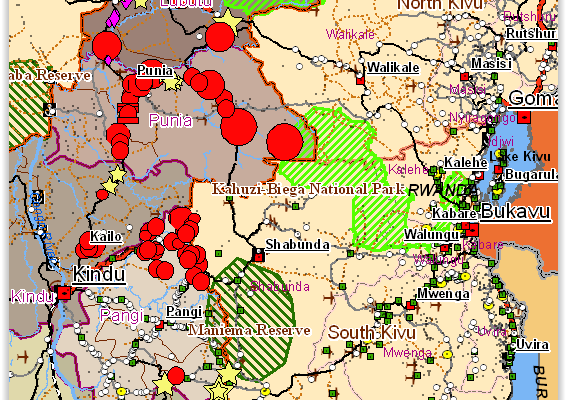
The complexity of resource governance in a context of state fragility: An analysis of the mining sector in the Kivu hinterlands (2010)
November 30, 2010The report ‘Mining activity and mineral trade in the Kivu hinterland’ was commissioned by the Directorate General for Development (DG DEV) of the European Commission and aims to fill an information gap by identifying the principal mining sites and analysing the trade networks of the ‘eastern hinterland’ of the Democratic Republic of the Congo (DRC), located in Maniema, North Katanga and Orientale
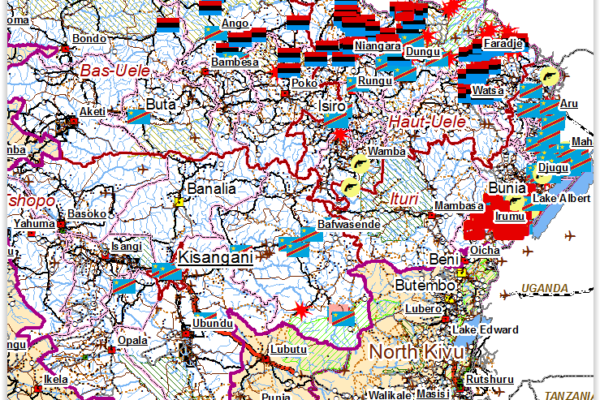
Mapping Conflict Motives: ‘Province Orientale’ (DRC) (2010)
March 22, 2010The districts of Ituri, Haut-Uele, Bas-Uele and the territory of Bafwasende continue to suffer from armed groups. Generally speaking, the strength of the armed groups throughout Orientale is limited and their effectives are few. Moreover, there is a considerable presence of the Congolese army. The Uele districts are the two most northern districts of Orientale bordering the Central African Republi
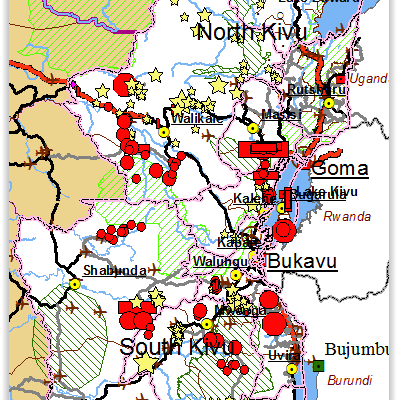
Accompanying note on the interactive map of militarised mining areas in the Kivus (2009)
August 16, 2009The MiMiKi map is a snapshot of the situation as it was in the period May-July 2009. All the armed groups deployed in the region profit directly from the mining activities. Armed groups have positions at more than half of the sites listed on the MiMiKi map where they obtain an (extra) income. The FARDC control some of the most important mining sites and do not restrain themselves from intervening
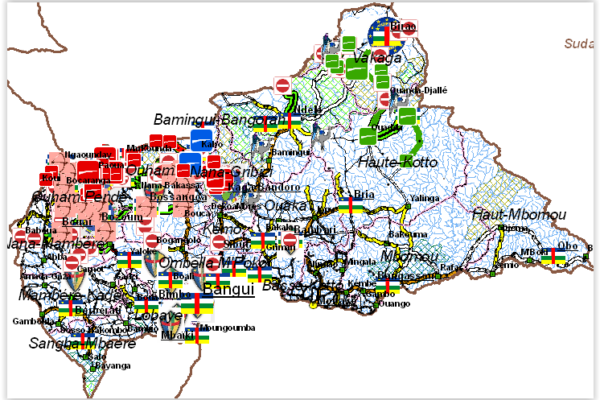
Mapping Conflict Motives: Central African Republic (2009)
February 18, 2009Not many areas in the Central African Republic are really secure. Although the country is scarcely populated, it is tormented by a multitude of armed actors. These belligerents use their weapons for a diversity of reasons but they have one thing in common: each of them would be a weak opponent for any well-organised state, but then this is exactly what the country lacks. Firstly, there are three C

Mapping Conflict Motives: Katanga. (Update May- September 2008)
January 23, 2009This report is the third (and for the moment the last) in a series of updates following an initial report on conflict motives in the Congolese province of Katanga. It analyses the most important security developments from May 2008 until September 2008. Download in pdf or open with issuu reader. http://issuu.com/ipisresearch/docs/20090105_mapping_katanga_update3_en The web maps We have publ
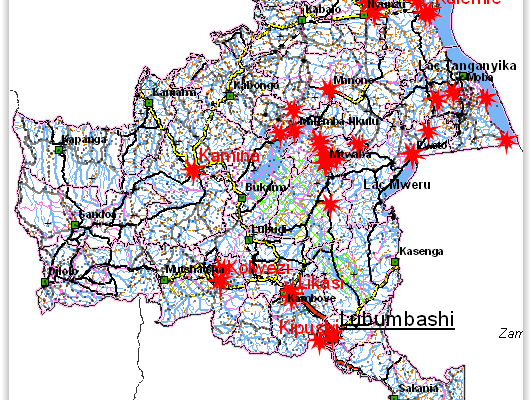
Mapping Conflict Motives: Katanga. (Update December 2007 – May 2008)
June 8, 2008This report is the second in a series of updates following an initial report on conflict motives in the Congolese province of Katanga. It analyses the most important security developments from December 2007 until May 2008. Download in pdf or open with issuu reader. http://issuu.com/ipisresearch/docs/mapping_conflict_motives-_katanga_u December 2007-May 2008 This report is the second in a se
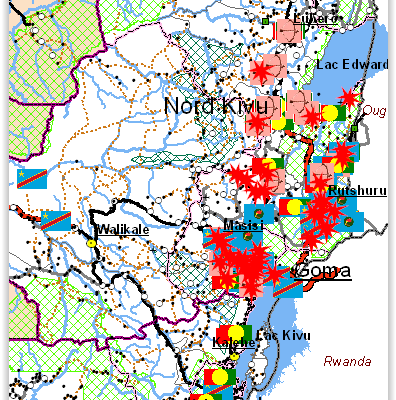
Mapping Conflict Motives: Eastern DRC (March 2008)
March 4, 2008The eastern DRC is still plagued by violent conflict. The centre of the conflict is the ‘Petit Nord’ region where two large armed groups, a coalition of smaller bands of armed men and the government army are all involved in a persisting battle causing enormous human suffering. In the neighbouring regions of the ‘Grand Nord’ and northern South-Kivu open warfare no longer takes place, but there is s
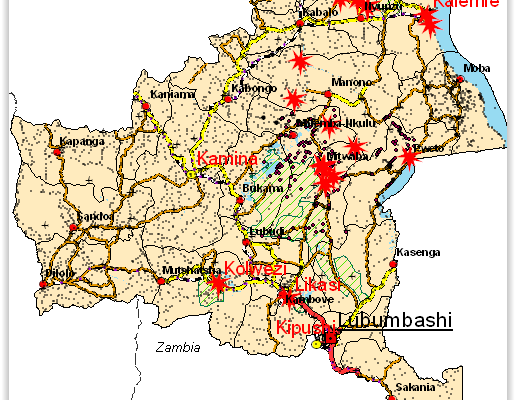
Mapping interests in conflict areas: Katanga. (Update September-November 2007)
January 23, 2008The International Peace Information Service (IPIS), a Belgium based research NGO, is a member of the Fatal Transactions consortium, which carries out the action ‘From Fatal to Fair Transactions’ with co-funding from the EU. IPIS’ contribution to this action is to develop a tool for the analysis of conflict drivers. Making use of GIS (Geographic Information Systems) software, we visualise possible
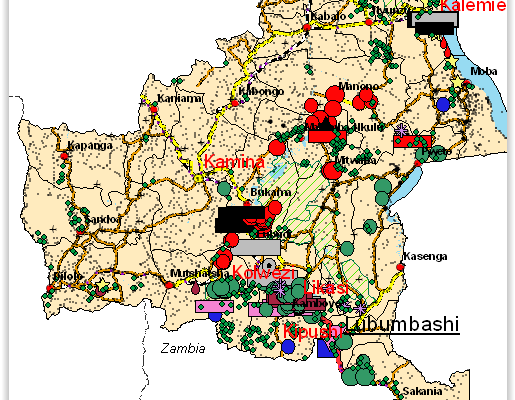
Mapping interests in conflict areas: Katanga (August 2007)
August 23, 2007Revised version August 2007. ‘Mapping interests in conflict areas: Katanga’ reports on the presence of (ex-) combatants in the Congolese province of Katanga. It focuses on two broad categories: the ‘Forces Armées de la République Démocratique du Congo’ (FARDC) and the Mayi-Mayi militias. There is no significant presence of other armed groups in the region. After the surrender of the warlord Gédéon

